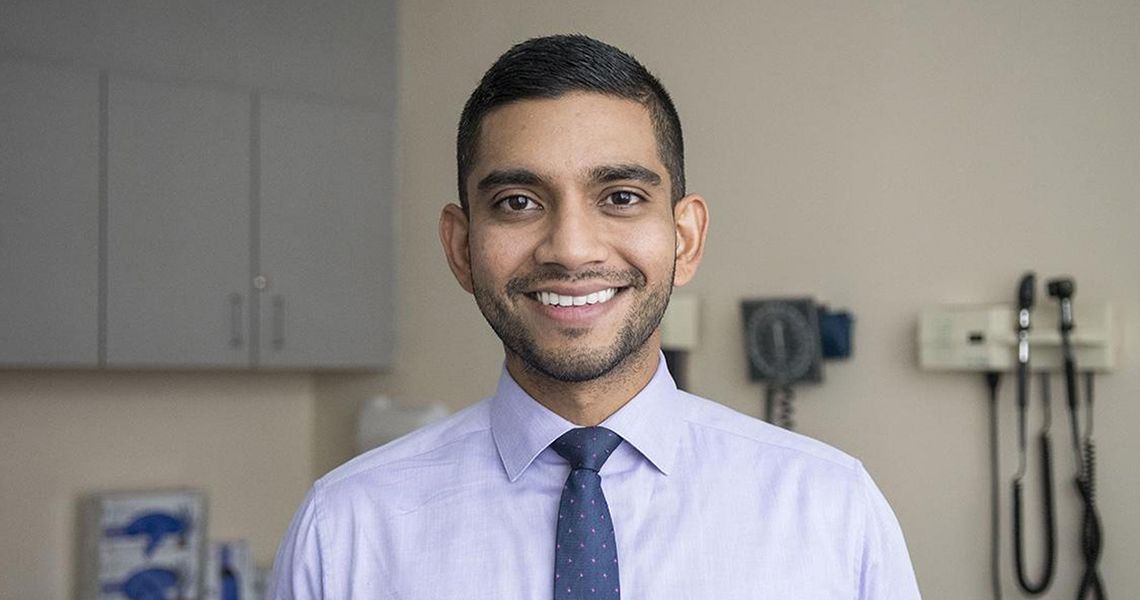For patients diagnosed with skin cancer, particularly basal cell and squamous cell carcinoma, one of the best treatment options can be Mohs surgery, a tissue-sparing, tumor-removal procedure. Vishal Patel, MD, assistant professor of dermatology and director of the Cutaneous Oncology Program at the George Washington University (GW) Medical Faculty Associates (MFA), explains what patients should know about this option, what it looks like, and what makes the GW MFA the optimal destination for treatment.
What is Mohs surgery?
Mohs surgery is short for Mohs micrographic surgery, or just micrographic surgery. It was named for Frederic Mohs, MD, who originally developed the procedure in 1938. This is a type of surgical technique that allows for complete margin analysis of a tumor specimen - around the edges and the deep portion of a removed cancer. Because the entire margin is evaluated, this technique provides the highest cure rates and lowest chance of recurrence for all skin cancers.
How does this procedure compare to other options for skin cancer treatment?
Mohs surgery, broadly speaking, is the same type of surgery as other traditional excisions, but the evaluation of the tumor is different. It involves a specialized processing that allows us to evaluate the entire tumor margin. Since 100% of the margin is evaluated, we have the highest confidence that all the tumor is out, and the risk of the cancer potentially coming back is lower.
Who should consider getting Mohs surgery?
Mohs surgery is indicated in certain higher risk skin cancers or in skin cancers found in higher risk locations, like the head and neck. Just because a skin cancer may be indicated to have Mohs surgery doesn’t mean a patient needs it. You should discuss with a Mohs surgeon whether your skin cancer might benefit from treatment with Mohs surgery.
What can patients expect during the procedure?
Mohs surgery is done in the outpatient clinic with local anesthesia. The skin cancer is removed with a small margin of normal skin and the defect is then bandaged. While the patient waits, the removed tissue is analyzed for margin evaluation, a process that takes 45-60 minutes. If the margins are clear, the surgeon will repair the wound using a variety of potential options, including a straight-line closure or a flap or graft closure, if indicated. Some surgeries do not require any repair and are allowed to heal by themselves.
How long does it take to heal from this procedure?
Generally, if the patient has sutures placed, these are removed in about one week, and the wound is nearly healed by then. If the wound is healing on its own without sutures, it may take about one to two months for the wound to fully heal.
How common is this surgery?
Mohs surgery is a common procedure offered by many dermatologists. However, at GW, we offer some advanced treatment options with Mohs surgery. We are one of the few places in the mid-Atlantic region, and one of only two locations in Washington, D.C., to offer Mohs surgery for melanoma and other rare tumors using immunostains. We are also the only center to offer Mohs surgery with same-day sentinel lymph node biopsy, if necessary.
What else sets the GW MFA apart?
In addition to Mohs surgery, our Cutaneous Oncology Program is a regional center of excellence and offers several cutting-edge clinical trials in advanced squamous, basal, and Merkel cell carcinoma, as well as melanoma.
To learn more about Mohs surgery or to make an appointment with a dermatologist, visit the GW MFA Department of Dermatology or call 202-741-2600.




